
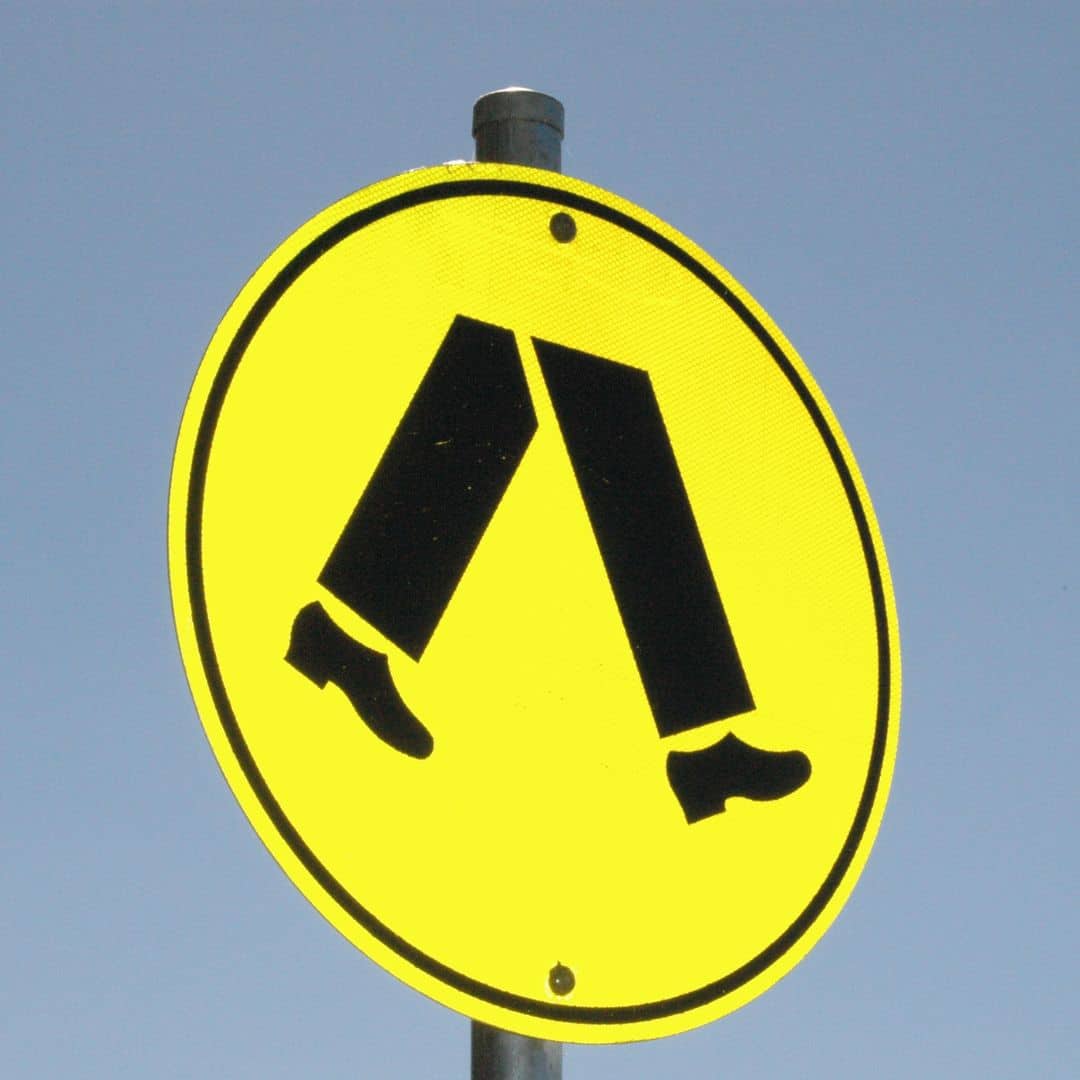
It is crucial that we are able to design environments that are favourable to pedestrians in today’s hectic world. We must also understand how crucial it is to protect pedestrians and encourage active transportation.
Due to increased pedestrian traffic, urbanisation, and an increasing emphasis on active transportation, ensuring the safety of pedestrians is more crucial than ever. Numerous advantages that affect tourism, liveability, and the vulnerability of pedestrians as road users come from making cities more liveable for pedestrians.
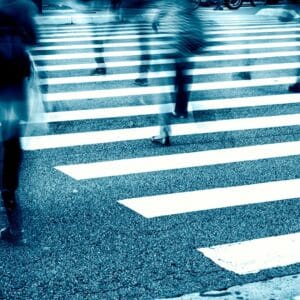
Australian cities are undergoing significant population expansion and urbanisation, which is resulting in increasing pedestrian traffic in a number of locations. Infrastructure that is pedestrian-friendly is becoming needed as more people relocate to cities in search of better employment prospects and lifestyles.
The promotion of healthy lifestyles and growing awareness of the environmental effects of automobiles have resulted in an increase in active transportation, such as walking and bicycling. As more individuals choose alternative means of transportation, pedestrian safety becomes a crucial aspect of promoting these sustainable practices.
Urban regions act as economic hubs, bringing in a significant amount of daily workers and tourists. Pedestrian safety is crucial to handle the rising numbers due to increased foot traffic in business districts and job hubs.
Walking and bicycling are active forms of transportation that have a number of health advantages, including a lower risk of obesity, cardiovascular disease, and stress-related ailments. Making cities more walker-friendly can encourage citizens to engage in regular exercise, which will improve their health and happiness.
Traffic congestion can be lessened in pedestrian-friendly towns by enticing more people to travel short distances on foot or by bicycle. This not only enhances traffic flow generally but also lowers greenhouse gas emissions, helping to preserve the environment.
Pedestrian-friendly cities and active transportation have several benefits.
Better Public Health: Walking and cycling are examples of active transportation that have many positive health effects, such as lowered chances of obesity, cardiovascular disease, and stress-related ailments. Making cities more walker-friendly can encourage citizens to engage in regular exercise, which will improve their health and happiness.
Traffic congestion can be lessened in pedestrian-friendly towns by enticing more people to travel short distances on foot or by bicycle. This not only enhances traffic flow generally but also lowers glasshouse gas emissions, helping to preserve the environment.
Urban areas that are pedestrian-friendly are more interesting and lively. Walking promotes social interactions and supports neighbourhood businesses by fostering a stronger feeling of community.
Walkable cities frequently draw more visitors and investors. Visitors are more inclined to spend time exploring and shopping in places that are pedestrian-friendly and have attractive streetscapes and public spaces, which can contribute to economic growth.
Australian cities are well-liked vacation spots, and tourists’ overall experiences are greatly improved by improved pedestrian safety. Travellers are more likely to explore a city on foot when the pedestrian areas are well-designed and safe.
A city’s general liveability and attractiveness as a place to live and work are influenced by its ability to be walked through and the safety of its pedestrians. Residents are more inclined to select communities that provide convenient and safe walking routes for running errands and enjoying leisure activities.
The creation of enticing public spaces where people may congregate, unwind, and take in the city’s cultural offerings is made possible by safe pedestrian areas like parks, promenades, and cultural centres.
Unlike motor vehicle occupants, pedestrians are not covered by the airbags, seat belts, or the frame of the vehicle. Because of this, there is a higher chance that they will be seriously hurt or killed in an accident.
A wide range of people use sidewalks, including young children, the elderly, and those with impairments. Since these vulnerable groups may experience specific difficulties navigating the urban environment, ensuring pedestrian safety is very important.
In Australian cities, pedestrian safety is of utmost importance because of the growing pedestrian traffic, the benefits of active transportation, the effect on tourism and liveability, and the vulnerability of pedestrians as road users.
We can promote healthier communities, lessen traffic, strengthen local economies, and build vibrant cities that put residents’ and tourists’ well-being first by putting a priority on pedestrian safety.
Improving crosswalks is an important aspect of pedestrian safety. Crosswalks that are well-designed and strategically placed serve an important role in making pedestrian surroundings safer, increasing active commuting, and minimising accidents.
The use of pedestrian-activated traffic signals, the advantages of high-visibility markings and reflective road studs, and the efficacy of elevated crosswalks in boosting visibility and safety are all critical components of the pedestrian safety process.
Well-designed crosswalks include clear and visible markings that assist walkers and warn cars of their presence. High-contrast markers are highly efficient in increasing visibility, especially in low-light or severe weather circumstances.
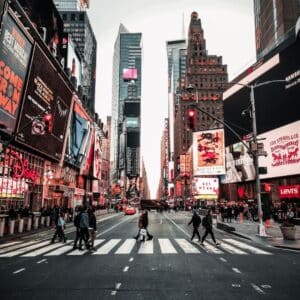
Across the city, standardised crosswalk designs promote predictability for both walkers and automobiles. Design components like crossing lengths and sign locations that are consistent to eliminate confusion and improve safety.
It is critical to ensure that crosswalks are accessible to all pedestrians, especially those with impairments or mobility issues. Kerb ramps and tactile pavement improve accessibility and inclusion.
Pedestrian-activated traffic signals, such as push-button crossings, provide pedestrians control. These crossings give safer crossing chances by enabling them to activate the signal when they are ready to cross.
Pedestrian-activated signals may be adjusted to give longer crossing times, allowing slower pedestrians, pensioners, and those with impairments to cross safely.
By only halting traffic when pedestrians are present, these signals assist motorists avoid excessive congestion and delays, supporting a more efficient flow of traffic.
High-visibility markings, such as zebra crossings and ladder-style markings, call attention to the crosswalk and boost visibility from a distance to both walkers and automobiles.
Installing reflective road studs at the crosswalk’s borders improves visibility at night or in low-light settings. These studs light up the crosswalk, alerting cars of its existence and safely directing pedestrians.
RPMs installed on crosswalks provide a tactile and aural indication for cars, adding an extra layer of awareness to urge pedestrians to yield.
Raised crosswalks raise pedestrians above street level, making them more visible to automobiles. Drivers are also alerted to the existence of a pedestrian crossing, lowering the likelihood of an accident.
Raised crosswalks serve as excellent traffic calming measures, causing cars to slow down as they approach the crossing. This helps to reduce speeding and improve overall road safety.
An elevated crosswalk may provide a clear visual indication that pedestrians have the right-of-way, reaffirming their precedence at the crossing and urging cars to be more cautious.
We can dramatically increase pedestrian safety by implementing pedestrian-activated traffic signals, high-visibility markings, reflective road studs, and elevated crosswalks. These improvements not only safeguard pedestrians but also establish an atmosphere that fosters active mobility and community well-being.
We can greatly increase pedestrian safety by implementing pedestrian-activated traffic signals, high-visibility markings, reflective road studs, and elevated crosswalks. These improvements not only safeguard pedestrians but also produce an atmosphere that fosters active commuting and community well-being.
Shared spaces blur the distinction between walkers and automobiles, providing a once-in-a-lifetime chance to develop harmonious and safer interactions between the two. We will discuss the advantages of designated pedestrian zones, the need of restricting car access to improve safety, and the role of effective road safety technologies in converting shared places into pedestrian paradises. Join me as we imagine a world in which pedestrians may confidently and joyfully explore our cities.
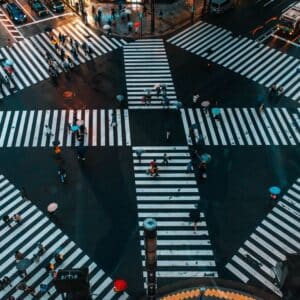
Shared spaces disrupt the usual separation of pedestrian and automobile traffic by establishing a harmonic mix of the two. The approach strives to build people-centric settings that prioritise pedestrian needs while accommodating cars.
Physical barriers such as traffic signals and kerbs are often removed in shared places, allowing for a more organic movement of both people and cars.
Shared spaces promote a greater degree of awareness and concern among all road users, promoting an atmosphere in which everyone shares the responsibility for safety.
Designating pedestrian zones reduces possible confrontations with motor traffic, dramatically lowering the likelihood of accidents and improving overall pedestrian safety.
Pedestrian zones encourage walking and cycling by providing safe and appealing locations for these active forms of transportation. This benefits public health and minimises the environmental effect of automobile use.
Pedestrian zones work as dynamic meeting spaces, encouraging community engagement and supporting local businesses. They help to make cities more dynamic and pleasurable places to live.
By restricting vehicle access to defined entrance points or imposing time limits, shared areas may reduce vehicle presence, making the environment safer and more tranquil for walkers.
Enforcing low-speed restrictions in shared places encourages drivers to be more careful and observant of pedestrian activity, which improves overall safety.
Clearly identifying pedestrian right-of-way in shared places reinforces their importance, decreasing confrontations and encouraging automobiles to yield to walkers.
Strategically placed bollards and delineators may help both walkers and automobiles by establishing clear routes and outlining the shared space’s limits.
Reflective road studs improve visibility in low-light settings, directing people safely across the shared area.
Speed humps and cushions may be strategically placed in shared zones to urge automobiles to slow down and increase pedestrian safety.
Improving shared spaces for pedestrian safety is a transformational approach to urban design that prioritises pedestrian requirements while harmoniously integrating cars. We can make shared areas safer, more welcoming, and more lively for everybody by establishing designated pedestrian zones, restricting car access, and using effective road safety measures.
Intersections are key areas of convergence for humans and automobiles, making them potential hotspots for accidents and confrontations. There are many ways for improving intersections that attempt to reduce dangers and increase pedestrian safety. What are the problems that pedestrians experience at crossings, what are the advantages of establishing traffic islands and refuge zones, how successful Leading Pedestrian Intervals (LPI) are in decreasing confrontations, and what role do delineators and bollards play in increasing intersection visibility?
Intersections feature various traffic streams and turning actions, which may result in pedestrian-vehicle collisions.
Buildings, parked cars, and street furniture may obscure pedestrian and motorist views, increasing the danger of an accident.
Pedestrians crossing at crossings are exposed to left-turning automobiles because drivers do not always yield appropriately.
During multi-stage crossings, traffic islands and refuge zones offer defined places for pedestrians to halt and wait, decreasing their exposure to cars.
Traffic islands at the centres of vast junctions provide safe havens for pedestrians halfway, enabling them to cross one lane of traffic at a time.
Raised traffic islands and refuge spaces make pedestrians more visible to automobiles, lowering the chance of conflicts.
LPIs offer advanced walk signals to pedestrians before traffic movements begin, allowing them a head start in crossing the junction safely.
By providing clear priority for pedestrians, LPIs assist decrease confrontations between turning cars and walkers.
By offering a distinct pedestrian-only signal phase, LPIs increase pedestrian visibility to cars, hence increasing safety.
Delineators and bollards may be used to clearly indicate crosswalk borders, leading people to the safest regions for crossing.
Delineators and bollards may assist in channelling vehicle traffic, ensuring that cars follow suitable lanes and routes, and decreasing the possibility of straying into pedestrian zones.
Reflective delineators and bollards improve junction visibility at night, making pedestrians more visible to cars.
Intersections are key points where pedestrian safety must be prioritised. We can make Australian cities safer and more accessible for pedestrians by including refuge spaces and traffic islands, prioritising pedestrians with Leading Pedestrian Intervals (LPIs), and using delineators and bollards for greater visibility. Working with urban planners, local governments, and communities to put these solutions into action lays the way for a future where crossroads are safe havens for pedestrians, promoting active transportation, and building vibrant, pedestrian-friendly urban settings. With these proactive steps, we can make a significant impact in ensuring that pedestrians can safely and securely negotiate junctions, contributing to a safer and more liveable cityscape for everybody.
Road safety goods are essential for improving pedestrian safety. Let’s look at some of the most important road safety goods, such as speed humps, delineators, bollards, reflective road studs, and markings, and how we may create tailored solutions to solve particular pedestrian safety issues.
Reflective road pavement markers, markings, and delineators improve the visibility of pedestrian crossings and shared areas, making pedestrians more visible to automobiles at all times, particularly in low-light settings.
Speed humps and cushions are useful instruments for controlling vehicle speeds in pedestrian-friendly zones. They promote safer settings for pedestrians by urging automobiles to slow down.
Bollards and delineators assist direct walkers down defined pathways and may be strategically employed to divert traffic, lowering the danger of collisions between pedestrians and cars.
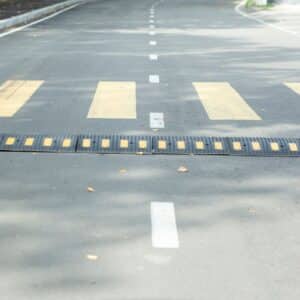
Speed humps reduce vehicle speeds around crosswalks and junctions, ensuring drivers are more alert to pedestrians.
Speed cushions are built with cutouts to enable bigger vehicles, such as emergency vehicles and buses, to pass while still slowing down other cars near pedestrian zones.
Delineators are flexible poles that may be used to indicate the borders of pedestrian crossings and efficiently regulate traffic flow.
Bollards are used to safeguard pedestrian zones against unauthorised vehicle entry, such as sidewalks and refuge islands.
Reflective pavement markers improve the visibility of crosswalks and shared areas in low-light settings, guiding people safely.
Crosswalk markings with high visibility and pedestrian emblems call attention to authorised crossing areas, alerting cars to the presence of pedestrians.
Custom solutions for high-traffic pedestrian zones may include a mix of road safety devices to guarantee maximum visibility and driver awareness.
To protect children and promote better driving behaviour, customised safety measures near schools may include speed cushions, higher crosswalks, and enhanced signs.
At congested junctions, customised solutions such as delineators and bollards may be used to safely direct people across complicated traffic patterns.
We invite city planners, local governments, and communities to collaborate on the design and implementation of effective road safety products, fostering pedestrian-friendly cities where everyone can walk with confidence and security.
Street lighting is critical in increasing visibility for both pedestrians and automobiles, lowering the likelihood of accidents, and improving overall safety.
Adequate street lighting increases pedestrian vision, allowing them to recognise possible risks and travel safely, particularly in low-light settings or at night.
Well-lit streets and pedestrian crossings make pedestrians more visible to cars, lowering the risk of accidents caused by poor visibility.
Proper street lighting helps to a safer urban environment by discouraging criminal activity and providing pedestrians with a feeling of security.
Crosswalks, intersections, and shared spaces are high-priority lighting sites. Well-lit crosswalks make pedestrians visible to approaching automobiles, increasing the possibility that they will yield.
Dedicated pedestrian zones, such as city centres and parks, need enough illumination to enhance safety and stimulate pedestrian activity during the nighttime hours.
During peak traffic hours, well-lit crosswalks and pedestrian crossings near schools are critical for the protection of children and their parents.
LED streetlights provide energy-efficient solutions with decreased energy consumption and extended lifespans, contributing to cost savings and environmental sustainability.
Installing smart lighting systems with motion sensors and dimming capabilities may save energy consumption by giving light only when it is required.
Solar-powered lighting choices provide sustainable alternatives, decreasing reliance on the grid and minimising carbon emissions.
Adequate illumination is essential for pedestrian safety and for developing pedestrian-friendly surroundings. Proper street lighting provides a safer and more secure urban environment by improving visibility for both pedestrians and automobiles. Adopting energy-efficient lighting solutions, such as LED street lights and solar-powered choices, may help us deepen our commitment to sustainability by lowering our carbon footprint and preserving energy. We can build lively and liveable communities where pedestrians feel safe, engaged, and connected by lighting safety, making Australian cities genuinely pedestrian-friendly havens for everybody.
Creating pedestrian-friendly settings and guaranteeing pedestrian safety in Australian communities are critical objectives that need concerted efforts. We can improve pedestrian safety and make our roadways more polite and secure by cultivating a pedestrian safety culture. This article delves into the fundamental components of collaborative projects, public awareness campaigns, and community engagement in accomplishing these goals.
Improving pedestrian safety requires the engagement and coordination of several stakeholders, including traffic engineers, city planners, local governments, law enforcement, and community groups. They can work together to make roads safer.
Collaborative efforts should be directed by data analysis, identifying high-risk locations, and understanding the particular needs of pedestrians in diverse locales.
Involving urban planners and architects in the process ensures that pedestrian safety is prioritised when building motorways, intersections, and shared areas.
Raising public knowledge is a critical component of enhancing pedestrian safety. Educating both pedestrians and drivers may help to prevent accidents and create a safer road environment.
Public awareness campaigns may educate pedestrians on safe crossing practises, the appropriate use of designated crosswalks, and the need of being vigilant to their surroundings.
Campaigns focused on drivers may emphasise the need of yielding to pedestrians, comply with speed limits, and drive safely, particularly in pedestrian zones.
Instilling good road habits in children at a young age via pedestrian safety education builds the groundwork for a future generation of safety-conscious pedestrians.
Engaging local communities and advocacy groups is critical to personalising pedestrian safety measures to the unique requirements of each community.
By including local communities in workshops and interactive sessions, ideas and solutions may be exchanged, ensuring that pedestrian safety measures are relevant and successful in each location.
Collaborating with a pedestrian advocacy organisation raises awareness and pushes for improved pedestrian infrastructure.
Empowering local individuals to take ownership of pedestrian safety develops a feeling of communal responsibility and supports self-regulation among both walkers and automobiles.
By concentrating on public awareness and education, we can greatly enhance pedestrian safety in Australian cities. These activities are critical in teaching the public about safe driving practices and preventing pedestrian accidents. Furthermore, incorporating local populations ensures that safety measures are adapted to fit the specific demands of each area, establishing a culture of safety and responsibility. Through these joint projects, Australian communities may become safer and more liveable environments for pedestrians of all ages.
Data-driven initiatives are critical in making Australian cities’ streets safer and more pedestrian-friendly. We can solve pedestrian safety concerns and take tangible steps towards our goal of pedestrian-friendly urban settings by using the power of data.
Data gathering tools such as traffic cameras, pedestrian counts, and crowdsourcing information may give significant insights into pedestrian behaviours and possible safety hazards.
Geographic Information Systems (GIS) mapping allows traffic engineers to see and analyse pedestrian-related data, detecting high-traffic areas and possible problems with cars.
Historical data analysis helps us to detect trends and reoccurring concerns, directing us to prioritise safety measures in particular regions.
Analysis of near-miss occurrences, in which pedestrians barely escape collisions, may offer early warnings of potentially dangerous sites and allow proactive safety improvements.
Studying accident data provides critical insights into the main causes of pedestrian accidents, such as driving conduct, errors in road design, or insufficient pedestrian infrastructure.
By analysing accident data, we may identify contributing elements like speed, visibility, or pedestrian density, which can then be used to guide us in making targeted safety changes.
Data-driven methodologies identify junctions with high accident rates, allowing us to implement targeted interventions such as traffic signal changes, pedestrian-activated crossings, and better visibility.
Using data to identify speeding hotspots, we may build traffic calming measures such as speed humps or speed cushions to slow vehicles and enhance pedestrian safety.
By identifying high-traffic regions with insufficient infrastructure, we may prioritise the installation of dedicated pedestrian zones, higher crosswalks, and refuge islands.
Analysing the effects of established safety actions on a regular basis via data assessment helps us to gauge their efficacy and make necessary modifications.
Data-driven initiatives are critical in our efforts to make Australian cities’ streets safer for pedestrians. We can make meaningful progress towards our aim of pedestrian-friendly urban settings by identifying safety hotspots, analysing near-miss occurrences and accident data, and using this knowledge to inspire targeted safety improvements. We can build vibrant and inclusive communities where walking is safe, accessible, and pleasurable for everyone by using data-driven techniques.
As we’ve seen, there are a variety of policies and programmes in place to prioritise pedestrian safety on our roadways. We can drastically decrease pedestrian accidents, encourage active transportation, and build vibrant, liveable cities where pedestrians feel secure and welcome by adopting these strategies into our urban design and transportation systems.
Data-driven techniques have emerged as an effective tool for detecting risk areas and directing focused responses. We acquire significant insights into the unique issues that walkers experience on our streets by collecting and analysing data on pedestrian behaviour, accident statistics, and near-miss situations. We can deliberately execute safety enhancements where they are most needed, making our roadways safer for everyone.
Street illumination is also important for pedestrian safety. Adequate and well-placed street lighting improves visibility for both pedestrians and automobiles, lowering the likelihood of accidents in low-light and nighttime settings. We must recognise the value of well-lit crosswalks, crossings, and public areas in establishing a culture of safety and ensuring pedestrians can comfortably navigate the city at any time of day.
Measures such as speed bumps, delineators, bollards, and reflective road studs all contribute greatly to pedestrian safety. Vehicle speeds near pedestrian zones are efficiently managed by speed humps, urging drivers to be more vigilant and careful. Delineators and bollards give unambiguous advice and protection for pedestrians, while reflective road studs and markings improve visibility, particularly at night or in bad weather.
It is critical to raise public awareness and educate the public in order to build a safer road environment. Campaigns aimed at pedestrians and drivers educate the public on safe road conduct, encouraging responsible road use, and minimising accidents. Collaboration among traffic engineers, urban planners, local governments, and advocacy organisations ensures that pedestrian safety is prioritised in all parts of urban planning and development.
We aspire to establish pedestrian-friendly cities in collaboration with city planners, local governments, and communities, where walking is not only safe but also pleasurable. We try to lower our carbon impact while maintaining pedestrian safety by committing to energy-efficient and sustainable lighting options.
As we go forwards, let us work together to prioritise pedestrian safety and make our streets safer for everyone. We can embrace data-driven solutions, adopt road safety goods, raise public awareness, and collaborate with local communities to create pedestrian-friendly cities that reflect our dedication to safety and well-being. Let us walk together towards a future in which every pedestrian feels confident, safe, and appreciated as an important member of our road community.
Visit our website or get in touch with our staff for more details on how Speed Humps Australia may help you increase parking safety at childcare centres. Let’s work together to make parking lots at childcare centres safer for our young explorers and provide parents and carers peace of mind.
As we continue to place a high priority on safety in all elements of road travel, keep an eye out for additional educational articles and materials from Speed Humps Australia.
Get in touch with us today to seek a quote or to explore how we can help with offering a bespoke solution to your particular project requirements since our design and production are both handled internally and distributed throughout Australia.



For 10 years, our focus has been on one thing: to provide one style of product and to do it well.
Our wheel stops, speed humps and rumble bars meet Australian Standards, don’t fade, and we’ve never needed to replace one.

For 10 years, our focus has been on one thing: to provide one style of product and to do it well.
Our wheel stops, speed humps and rumble bars meet Australian Standards, don’t fade, and we’ve never needed to replace one.